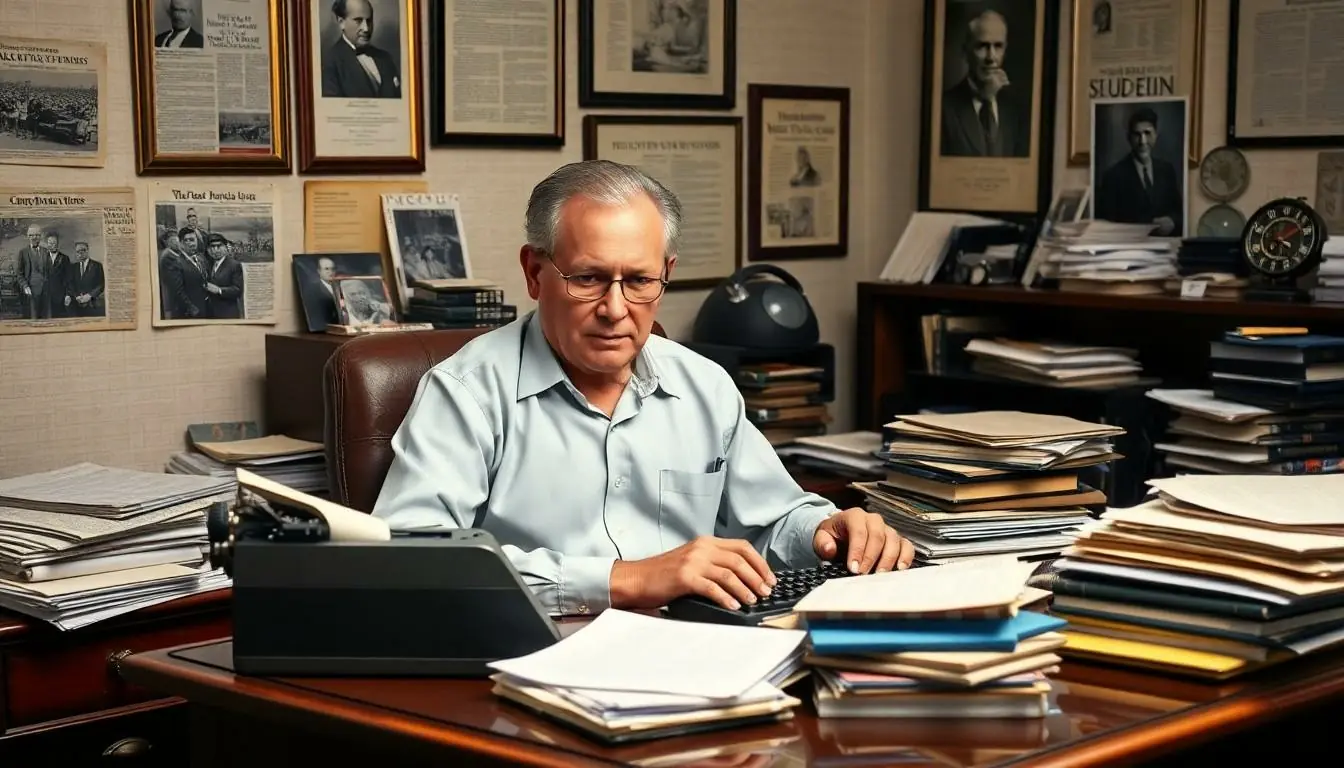Table of Contents
ToggleIn a world where headlines fly faster than a caffeinated squirrel, media ethics might seem like a distant concern. Yet, behind every clickbait article and viral video lies a tangled web of moral dilemmas that can make even the most seasoned journalist break into a cold sweat. From sensationalism to privacy invasions, these media ethics cases reveal the fine line between reporting the truth and sensationalizing the story.
Navigating this tricky terrain isn’t just for newsrooms; it’s essential for anyone who consumes media. Understanding these cases can spark conversations about accountability and integrity in journalism. So buckle up as we dive into the wild world of media ethics, where the stakes are high and the lessons are invaluable. After all, who doesn’t love a good story with a side of moral quandary?
Overview of Media Ethics
Media ethics encompasses the values and principles that guide journalists in their professional conduct. These ethical standards address the responsibilities of media professionals regarding truthfulness, fairness, and integrity. Journalists face significant challenges, including the temptation to sensationalize news stories to attract audiences.
Understanding privacy rights constitutes another crucial aspect of media ethics. Different situations arise where journalists must navigate the fine line between public interest and individual privacy. Ethical decisions often inform how information should be presented in a manner that respects this balance.
Additionally, the role of accountability emerges as a critical component of media ethics. Media organizations must be transparent about their practices, ensuring that audiences receive accurate and reliable information. Misleading reporting can damage public trust, emphasizing the need for ethical frameworks in journalism.
Crisis situations frequently heighten ethical dilemmas within the media. Events such as natural disasters or political upheavals require journalists to balance urgency with responsible reporting. In these moments, ethical practices become even more paramount to maintain credibility.
The impact of technology on media ethics cannot be overlooked. The rise of digital platforms has transformed how news is disseminated, often complicating ethical considerations. The speed at which information spreads raises questions about verification and source credibility.
Media ethics serves as a vital guidepost for journalists navigating a complex landscape marked by rapid dissemination of information. It reinforces the importance of maintaining standards that ultimately protect both the profession and the public.
Notable Media Ethics Cases
Several cases illustrate the complexities of media ethics, emphasizing the need for responsible reporting.
Case Study: The Watergate Scandal
The Watergate scandal exemplifies journalistic integrity and the pursuit of truth. In the early 1970s, reporters Bob Woodward and Carl Bernstein uncovered a cover-up linked to President Richard Nixon. Their investigative work revealed abuse of power, leading to significant political consequences. Ethical reporting played a crucial role in presenting facts accurately and avoiding sensationalism. Transparency shaped public trust, demonstrating how responsible journalism can hold powerful figures accountable. Media ethics guided their actions, prioritizing truthfulness over narrative convenience.
Case Study: The Duke Lacrosse Case
The Duke Lacrosse case highlights the dangers of media bias and premature conclusions. In 2006, allegations of sexual assault against three lacrosse players gained national attention. Early reporting often lacked thorough investigation, leading to sensationalized headlines and public outrage. As facts emerged, it became clear that the initial narratives were misleading. Media organizations faced criticism for failing to uphold ethical standards, such as fairness and accuracy. The incident served as a stark reminder of the impact of journalism on individuals’ lives, underscoring the necessity of ethical decision-making in high-stakes situations.
Ethical Principles in Journalism
Ethical principles in journalism provide a foundation for responsible reporting. These guidelines help journalists navigate complex situations while maintaining public trust and credibility.
Accuracy and Truthfulness
Accuracy in reporting ensures that information presented is correct and verifiable. Journalists must verify facts before publication, minimizing the potential for misinformation. Truthfulness extends beyond mere reporting of facts; it involves presenting information in context and avoiding misleading implications. By prioritizing accuracy, journalists uphold their responsibilities to inform the public honestly. Additionally, false claims or errors can significantly damage a media organization’s reputation. Consistently adhering to accuracy and truthfulness fosters credibility and builds audience trust.
Fairness and Impartiality
Fairness in journalism requires presenting multiple viewpoints, particularly when reporting on contentious issues. An impartial approach helps avoid bias and promotes balanced storytelling. Journalists strive to give a voice to all relevant parties, allowing audiences to form informed opinions. Emphasizing diversity of perspectives enriches news coverage and reflects the complexity of societal issues. Moreover, impartial reporting strengthens the relationship between the media and the public. Such dedication to fairness and impartiality ultimately enhances the integrity of journalism as a profession.
The Impact of Social Media
Social media significantly alters traditional media ethics. Ethical dilemmas arise with the rapid spread of information across digital platforms. Traditional journalism principles struggle to keep pace with the immediacy and reach of social media.
Challenges to Traditional Ethics
Audiences increasingly rely on social media for news, affecting the standards of verification. Breaches of accuracy occur more frequently, especially when individuals share unverified information. Journalists often find themselves competing with user-generated content, leading to ethical conflicts. The temptation to report breaking news without thorough fact-checking undermines credibility. Balancing speed and accuracy creates tension, challenging established norms in journalism.
High-Profile Social Media Cases
High-profile incidents highlight the ethical implications of social media. The 2020 U.S. Presidential election staged a battleground for misinformation. Numerous posts propagated false narratives, misleading the public. In another instance, the “Gamergate” controversy sparked discussions surrounding harassment and ethics in reporting. This case showcased how social media dynamics can amplify harmful narratives. These examples underscore the responsibility of journalists to navigate social media within an ethical framework.
Conclusion
Media ethics remains a cornerstone of responsible journalism. As the landscape evolves with technology and social media, the challenges faced by journalists only intensify. Upholding ethical standards isn’t just about adhering to guidelines; it’s about fostering trust and accountability in a world where misinformation can spread rapidly.
The cases discussed illustrate the fine line journalists walk between urgency and integrity. By prioritizing truthfulness, fairness, and accuracy, media professionals can navigate these complexities effectively. As consumers of news, understanding these ethical principles empowers individuals to demand better from media outlets, ultimately strengthening the profession and enhancing public discourse.





